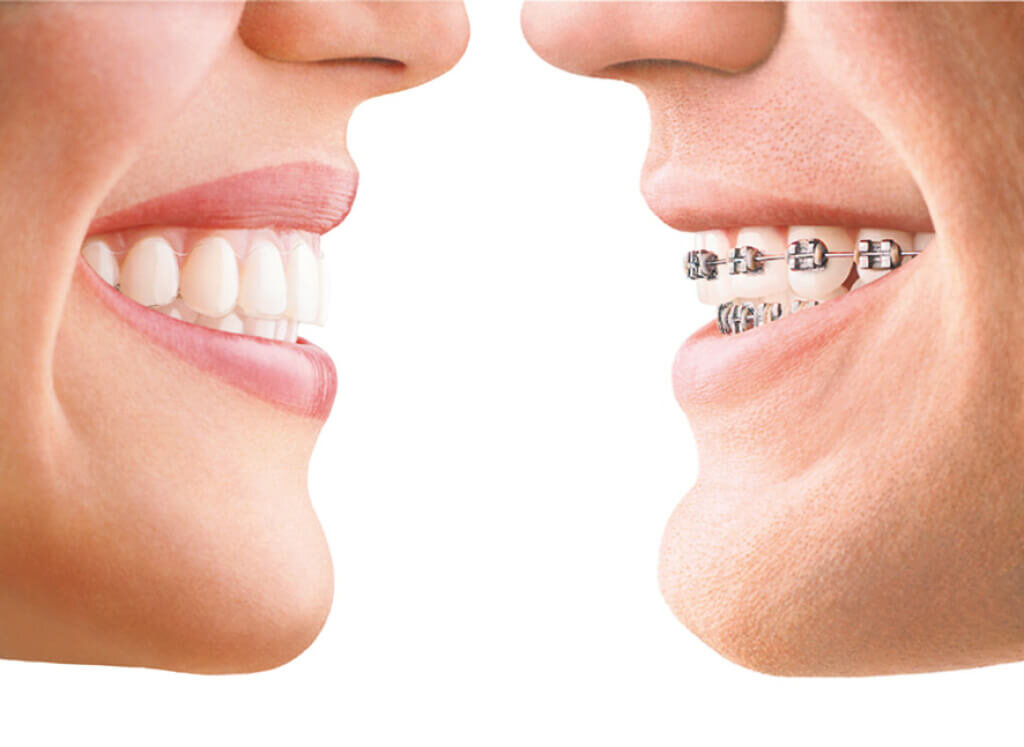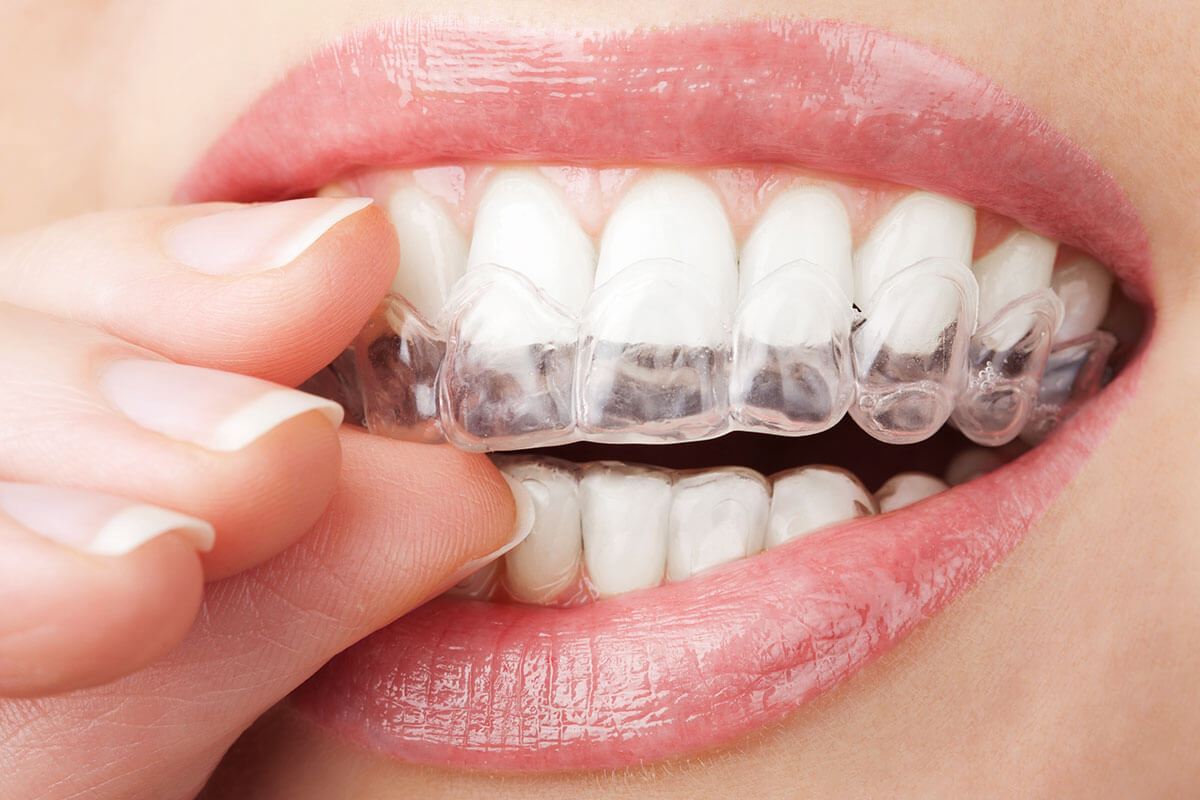What to Anticipate Throughout Your Invisalign Journey: A Comprehensive Review
What to Anticipate Throughout Your Invisalign Journey: A Comprehensive Review
Blog Article
Invisalign vs. Typical Braces: Which Alternative Is Right for You?
When thinking about orthodontic treatment, the option in between Invisalign and conventional dental braces provides numerous essential variables that merit cautious evaluation. Invisalign offers a very discreet alternative with detachable aligners, while standard braces offer a much more noticeable yet effective option for extreme misalignment.
Introduction of Treatment Alternatives

On the other hand, typical braces include metal brackets and cables that are bonded to the teeth. This method uses constant stress with time to accomplish alignment. While reliable for complicated orthodontic issues, typical braces need regular sees for adjustments and can position challenges in preserving oral health due to the trouble of cleaning around brackets and cables.
Both alternatives have their merits, and the choice frequently depends upon specific oral problems, way of life preferences, and individual compliance. Eventually, consulting an orthodontic specialist is important for determining one of the most suitable therapy plan tailored to specific requirements. Recognizing the nuances of each alternative can dramatically influence the total success of orthodontic treatment.
Aesthetic Factors To Consider
A considerable variable influencing the choice in between Invisalign and traditional dental braces is the aesthetic allure each treatment provides. Invisalign aligners are crafted from clear plastic, making them essentially unnoticeable when put on. This very discreet appearance is particularly attracting teens and grownups that may really feel self-conscious about their orthodontic treatment. The capacity to preserve a natural smile throughout the alignment process can dramatically enhance the individual's confidence in social and professional setups.
On the other hand, standard braces consist of steel brackets and wires, which can be more obvious. While improvements in orthodontic innovation have actually brought about the advancement of smaller braces and tinted elastics, traditional dental braces still keep a more noticeable profile. For some people, the exposure of braces might discourage them from seeking necessary treatment.
Ultimately, the option in between Invisalign and standard braces might depend upon personal choices pertaining to aesthetic appeals. People that prioritize discernment typically favor Invisalign, while those who are much less worried concerning exposure may opt for conventional dental braces. Recognizing the visual implications of each alternative is critical for making an educated decision that aligns with one's way of living and choices.
Comfort and Convenience

In terms of comfort, Invisalign aligners are detachable, allowing people to enjoy their favored foods without restriction and maintain ideal dental hygiene. Cleaning and flossing are streamlined, as the aligners can be obtained throughout these routines, whereas traditional braces require mindful maneuvering around my website cables and brackets.
In addition, Invisalign's dynamic system permits less orthodontic sees. Clients typically obtain multiple collections of aligners at once, which can streamline the therapy process and reduce time invested in the orthodontist's chair. In contrast, traditional braces necessitate regular modifications, making them less convenient for those with active timetables. Invisalign. On the whole, the convenience and convenience of Invisalign make it an enticing choice for many individuals seeking orthodontic treatment.
Treatment Duration and Effectiveness
While both Invisalign and typical dental braces are effective in correcting oral misalignments, the duration of treatment can differ dramatically between the 2 alternatives. Generally, Invisalign therapy can take anywhere from 12 to 18 months, depending on the intricacy of the situation. The clear aligners work by gradually changing teeth into their desired settings, and routine follow-ups with an orthodontist help make certain progress continues to be on the right track.
In contrast, typical dental braces typically call for a longer dedication, generally varying from 18 months to 3 years. This is due to their fixed nature and the use of braces and wires, which can be much more reliable for serious imbalances and complex instances (Invisalign). The treatment effectiveness of standard dental braces is well-documented, as they allow for exact changes and greater control over tooth movement
Inevitably, the selection in between Invisalign and conventional dental braces might rest on both the expected therapy duration and the specific dental issues available. Consulting with an orthodontist is critical, as they can supply tailored recommendations based on private demands, guaranteeing the picked technique straightens with wanted timeframes and outcomes.
Price Comparison and Insurance Options
Price plays a significant function in the decision-making process for people thinking about orthodontic therapy, whether going with Invisalign or typical braces. Generally, the expense of Invisalign varieties from $3,000 to $8,000, while conventional braces generally set you back between $2,000 and $6,000. Variables influencing these prices include the complexity of the instance, the period of treatment, and geographical location.
Insurance policy protection can dramatically influence out-of-pocket costs. Numerous dental insurance policy plans offer partial insurance coverage for orthodontic treatments, yet the specifics can vary extensively. It is critical for patients to evaluate their insurance policies to determine the extent of protection for either choice. Normally, conventional dental braces might be more regularly covered by insurance plans compared to Invisalign, which some insurance firms classify as an aesthetic treatment.
Additionally, numerous orthodontic practices provide flexible payment plans, making both treatment choices a lot more accessible. Patients ought to ask about prospective financing choices and discount rates for in advance repayments. Examining the overall expense, consisting of insurance policy advantages and repayment strategies, is essential for making an informed choice that aligns with both visual choices and budget plan factors to consider.

Verdict
In summary, the selection between Invisalign and traditional dental braces hinges on numerous elements, consisting of aesthetic choices, comfort, therapy duration, and expense. Invisalign offers a very discreet, removable choice that facilitates oral health and dietary adaptability, while conventional braces might be preferable for complex oral concerns and typically come with a lower cost factor. Ultimately, examination with advice an orthodontist is important to examine individual situations and establish the most suitable therapy alternative for achieving ideal oral placement.
When considering orthodontic treatment, the option in between Invisalign and typical braces presents a number of crucial variables that warrant careful assessment.Comparing Invisalign and standard dental braces discloses distinctive therapy alternatives for orthodontic correction.While both Invisalign and conventional braces are efficient in fixing dental imbalances, the duration of treatment can vary substantially in between the 2 choices.Expense plays a considerable function in the decision-making process for individuals thinking about orthodontic treatment, whether choosing for Invisalign or standard braces.In summary, the choice between Invisalign and conventional braces investigate this site hinges on numerous variables, consisting of visual choices, convenience, treatment duration, and cost.
Report this page